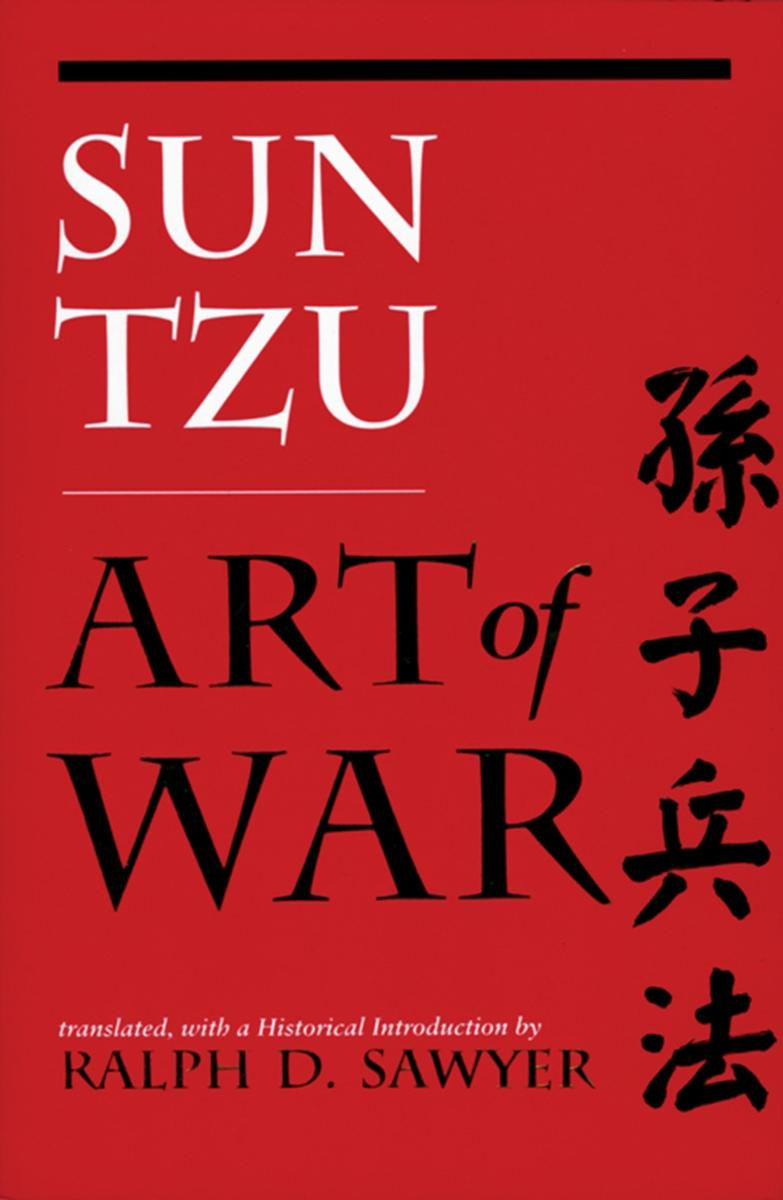As for deploying the army and fathoming the enemy: (…) After crossing rivers you must distance yourself from them. If the enemy is forging a river to advance, do not confront them in the water. When half their forces have crossed, it will be advantageous to strike them. If you want to engage the enemy in battle, do not array your forces near the river to confront the invader but look for tenable ground and occupy the heights.
Having some basic tactical acumen is a skill which I think is simultaneously overvalued and undervalued for Game Masters.
 Undervalued in part because there’s a prominent segment of the hobby that snootily holds its nose in the air and tries to draw a line between “roleplaying” and combat. (Which is weird, because mortal danger is a thing which artists have used to explore character since the dawn of narrative, and it feels more likely that you just aren’t very good at using combat in your roleplaying games than it is that roleplaying games are this special snowflake in which heightened stakes don’t have the same effect they do everywhere else.) And also because some gamers don’t feel that tactical knowledge is useful unless you’re playing a game with lots of “tactical rules”. (Whereas, in my experience, the less mechanical support you have for tactics, the more important it is for the GM to be familiar with them.)
Undervalued in part because there’s a prominent segment of the hobby that snootily holds its nose in the air and tries to draw a line between “roleplaying” and combat. (Which is weird, because mortal danger is a thing which artists have used to explore character since the dawn of narrative, and it feels more likely that you just aren’t very good at using combat in your roleplaying games than it is that roleplaying games are this special snowflake in which heightened stakes don’t have the same effect they do everywhere else.) And also because some gamers don’t feel that tactical knowledge is useful unless you’re playing a game with lots of “tactical rules”. (Whereas, in my experience, the less mechanical support you have for tactics, the more important it is for the GM to be familiar with them.)
Overvalued because there’s another segment of the hobby which places tactics on kind of a holy altar above all other concerns. (And there’s a chunk of this group which is not really interested in actual tactics at all, but rather in a very specific flavor of mechanical manipulation. A surprising number of these don’t actually spend much or any time playing at all, but do enjoy spinning spherical cows whenever they get the chance.) I’ve even met would-be GMs who don’t take the plunge because they believe they need to be able to match tactical wits with their players and feel as if they won’t be up to the task.
The thing about tactics in an RPG when you’re the GM is that there are four simple truths which make your relative tactical mastery (compared to the players) almost irrelevant:
- Just keep throwing more bad guys at the problem until you reach a tactical equilibrium. Maybe some other GM could challenge your players with five bad guys and you need nine of them. It doesn’t matter because (a) that other GM isn’t here and (b) you’re successfully challenging them.
- If your players create some tactical conundrum that you can’t figure out how to overcome, simply have your NPCs do whatever it is that they’re doing. Your players will show you how to beat their own best tactics.
- Encounters are cheap and your failure is the group’s success. You don’t want every encounter to be a pushover, but if you avoid the My Precious Encounter™ method of prep (and you should anyway, right?) then nothing of real value is “lost” if you throw up the occasional tactical dud, particularly since your players will be cheering their victory as they move on to the next encounter.
- You’ll get better with practice.
And as you get better with practice, you will find that some basic tactical acumen is valuable to have tucked away in your GM’s toolkit. When applied properly, it creates more interesting and varied encounters. Tactical thinking is, ultimately, creative thinking. And by presenting a variety of tactics, you will provoke creativity in your players.
The good news is that, in my experience, a little bit goes a long way here. Whole libraries full of books have been written about tactics, but in practice you only need a handful of basic techniques. (This is particularly true because you can dial difficulty with the number of opponents in addition to your own tactical genius.)
HALF ACROSS THE RIVER
As Tee was working to release Dominic from his harness, however, Tor suddenly gave a cry and drew his sword: The troughs of ooze were beginning to undulate. Tee whirled and drew her dragon pistol, blasting at the surface of the trough to her left. As she did so, the motions of the ooze became great waves which sickeningly shuddered their way from one end of the troughs to the other.
Here’s one such tactical technique: Engage the PCs when half of them have crossed the river.
This doesn’t have to be an actual river, of course. In the current session the “river” is the rope the PCs are using to climb down into the sinkhole: Tee and Tor climb down the rope and then, just after Dominic has been lowered but before he’s released from the harness, the oozes attack. Tee and Tor have crossed the river; Dominic is in the water; and the rest of the party (plus their goblin allies!) are still on the far side of the river.
There was a similar dilemma – also featuring height – back in Session 11 (when the PCs needed to climb down into the ruined fungal garden).
This tactical technique creates a great deal of complication at the very beginning of the fight. It can prevent PCs from achieving their ideal or “clean” engagement (whether that’s something they’ve carefully planned out or just the routine which has become habitual for them). It also forces the PCs to deal with whatever the “river” is dynamically while under the intense time constraints which are naturally part of the combat system.
A couple of things to keep in mind when using this technique:
First, don’t attack too soon. If you attack as soon as the first PC crosses the river, it can be too easy for them to pull back. Let several of the PCs commit themselves across the transition and then attack (from hiding, from the next room, from the Ethereal Plane, whatever). Roughly half the party is a good rule of thumb, but won’t necessarily apply in all circumstances.
Second, remember that the attack can also target the characters who haven’t made the transition yet. You can even occasionally have bad guys hit both sides of the “river” simultaneously. (This can create a tougher fight, but can, paradoxically, actually result in less tactical complexity, as the PCs will usually just settle into two largely separate fights on each side of the “river”.)
Third, make sure that the bad guys take advantage of the “river” to best effect. (If it’s a literal river, for example, maybe they push the PCs into it when they charge.) This works particularly well if the bad guys have special abilities that are enhanced by the “river”, take advantage of the “river”, or allow them to ignore the “river”. (This often happens naturally in fantasy settings because bad guys are often themed to their environment; oozes in a cavern of ooze, for example.)
SETUP
There was trepidation among those standing at the edge of the sinkhole and surrounded by rotting fungus, sickly slime, and malformed corpses. Tee, in particular, harbored deep misgivings. To her the sinkhole was filled with a horrible foreboding and a sense of nameless doom.
Unless the bad guys are proactively pursuing the PCs, I tend to spend little or no time prepping tactics for them ahead of time. I find it leads to a lot of wasted prep and I think it’s simply far more interesting to tactically react in real time to what the PCs are doing. That’s one of the reasons this sort of Swiss Army knife of tactical techniques is so useful: You just spin out whatever’s appropriate while actively playing the NPCs.
 This particular technique is great because it often doesn’t require any setup at all. The PCs will usually do it to themselves. You can see that with the rope in the current session. If you think back to the near TPK in Session 7, that was due to the players allowing themselves to become sufficiently separated in featureless water that they had effectively “crossed the river” and could only reach each other with time-consuming difficulty.
This particular technique is great because it often doesn’t require any setup at all. The PCs will usually do it to themselves. You can see that with the rope in the current session. If you think back to the near TPK in Session 7, that was due to the players allowing themselves to become sufficiently separated in featureless water that they had effectively “crossed the river” and could only reach each other with time-consuming difficulty.
Later in the campaign, the group got their hands on a ring of teleport. I was initially concerned that easy, unlimited access to teleport magic might be too powerful for where the campaign was at. But since the entire party can’t teleport in a single use of the ring, it turns out the more aggressive they get with using the ring tactically, the more likely they are to “cross the river” as the characters in the initial teleport desperately try to maintain a beachhead during the long rounds it takes for the wearer of the ring to cycle back and forth. (Or, conversely, hold out during the teleport-enabled retreat.)
So all you need to do is keep your eyes open: When the PCs have stretched themselves out and effectively separated themselves across a barrier requiring time, effort, or both to cross, that’s your “river”. And that’s when the bad guys should attack!













BTW, the session that this post is referring to doesn’t seem to have been actually posted yet.